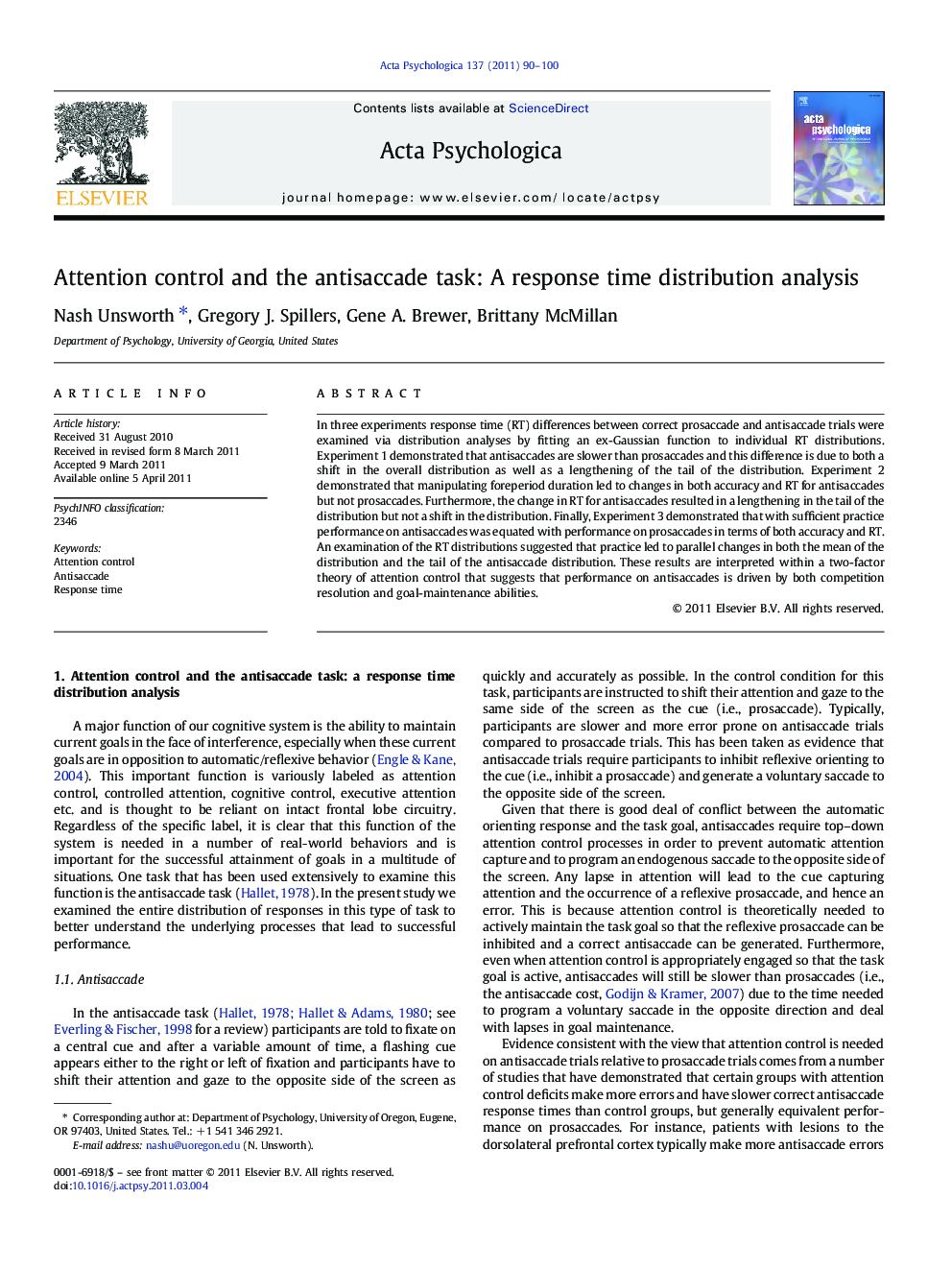| Article ID | Journal | Published Year | Pages | File Type |
|---|---|---|---|---|
| 920158 | Acta Psychologica | 2011 | 11 Pages |
In three experiments response time (RT) differences between correct prosaccade and antisaccade trials were examined via distribution analyses by fitting an ex-Gaussian function to individual RT distributions. Experiment 1 demonstrated that antisaccades are slower than prosaccades and this difference is due to both a shift in the overall distribution as well as a lengthening of the tail of the distribution. Experiment 2 demonstrated that manipulating foreperiod duration led to changes in both accuracy and RT for antisaccades but not prosaccades. Furthermore, the change in RT for antisaccades resulted in a lengthening in the tail of the distribution but not a shift in the distribution. Finally, Experiment 3 demonstrated that with sufficient practice performance on antisaccades was equated with performance on prosaccades in terms of both accuracy and RT. An examination of the RT distributions suggested that practice led to parallel changes in both the mean of the distribution and the tail of the antisaccade distribution. These results are interpreted within a two-factor theory of attention control that suggests that performance on antisaccades is driven by both competition resolution and goal-maintenance abilities.
Research highlights► Response time distributions in prosaccade and antisaccade tasks were examined. ► Differences were due to both a shift in the distribution and a lengthening of the tail. ► Manipulations of foreperiod duration and practice influenced the distributions. ► Antisaccade performance is due to both competition resolution and goal-maintenance.
